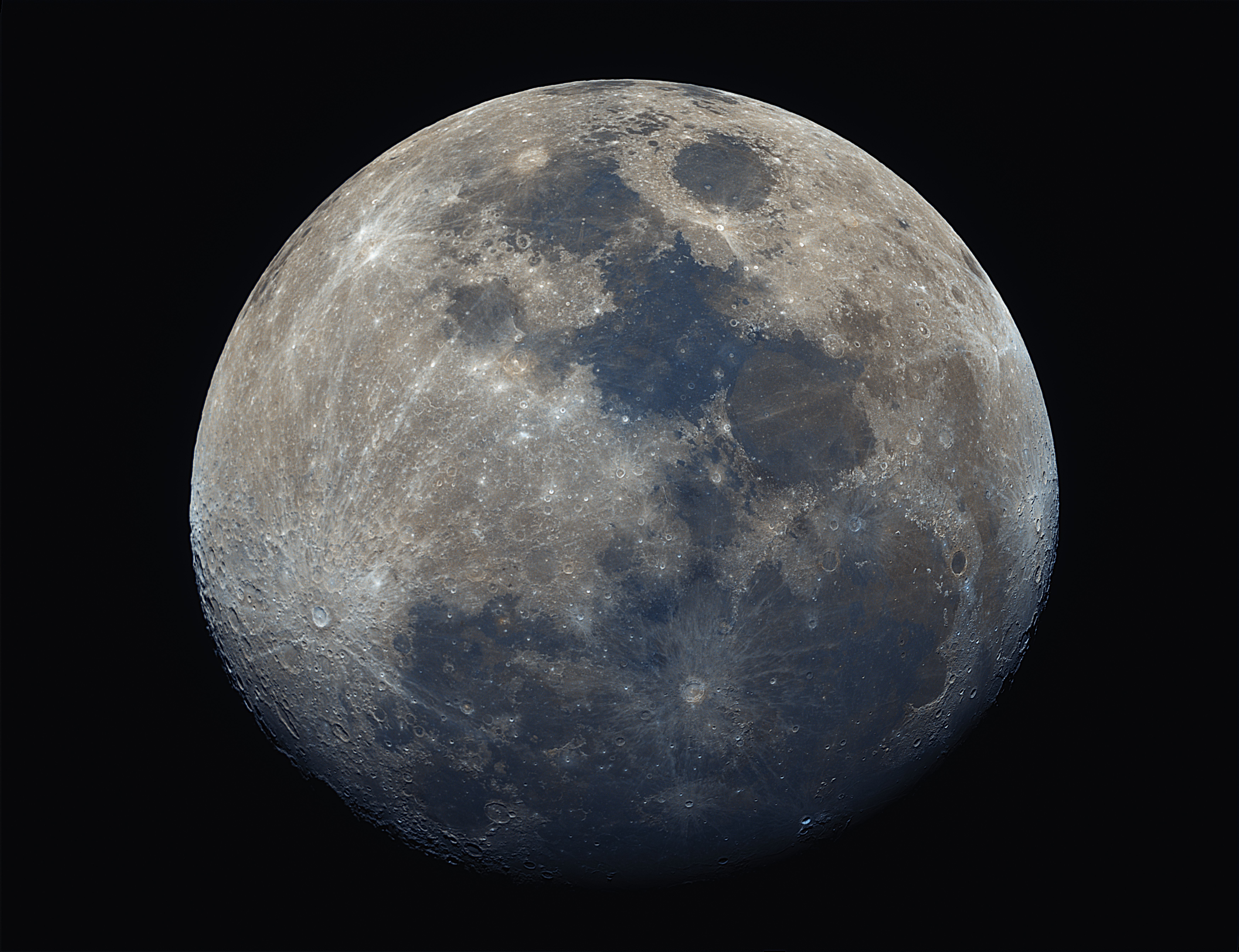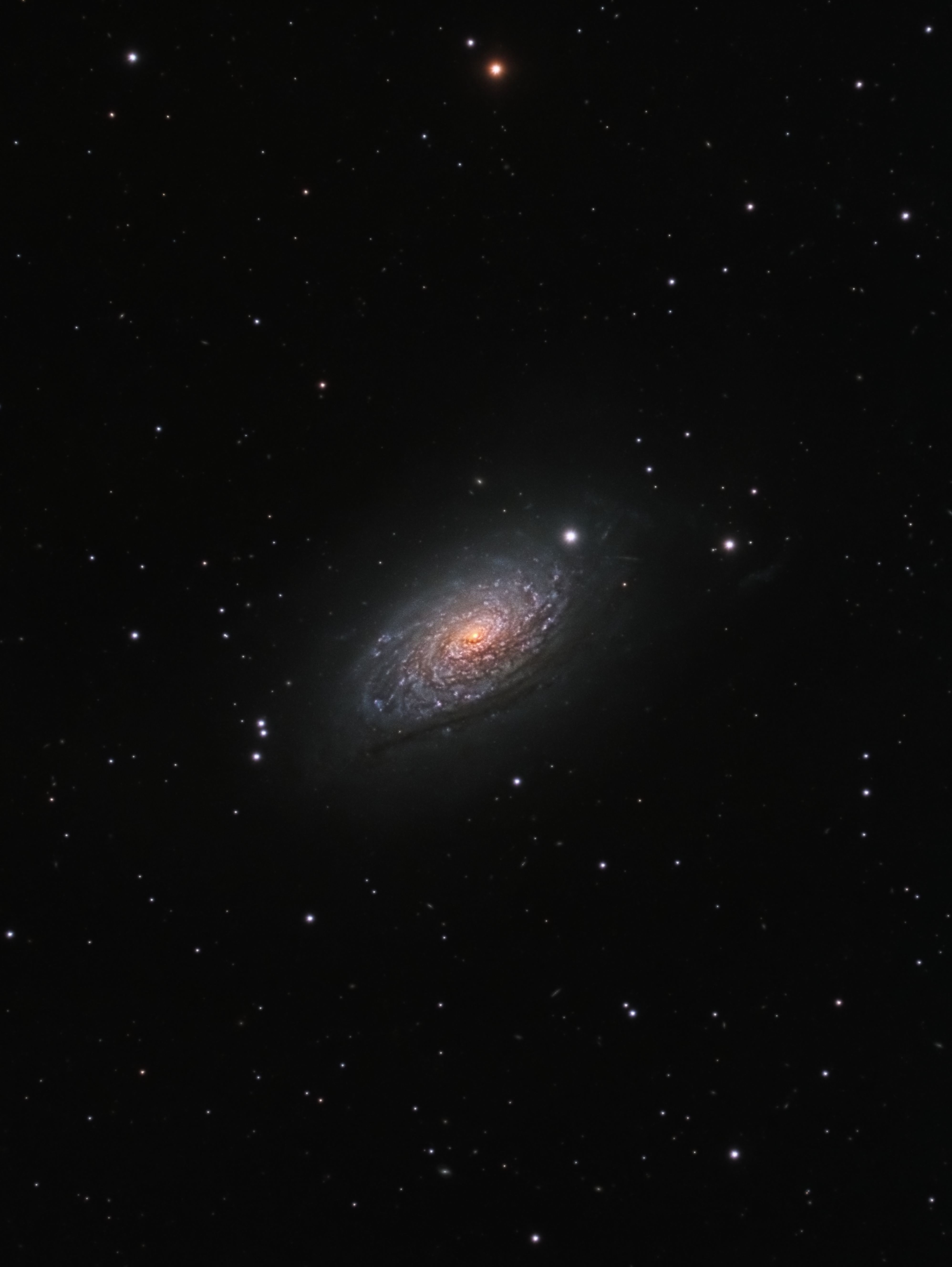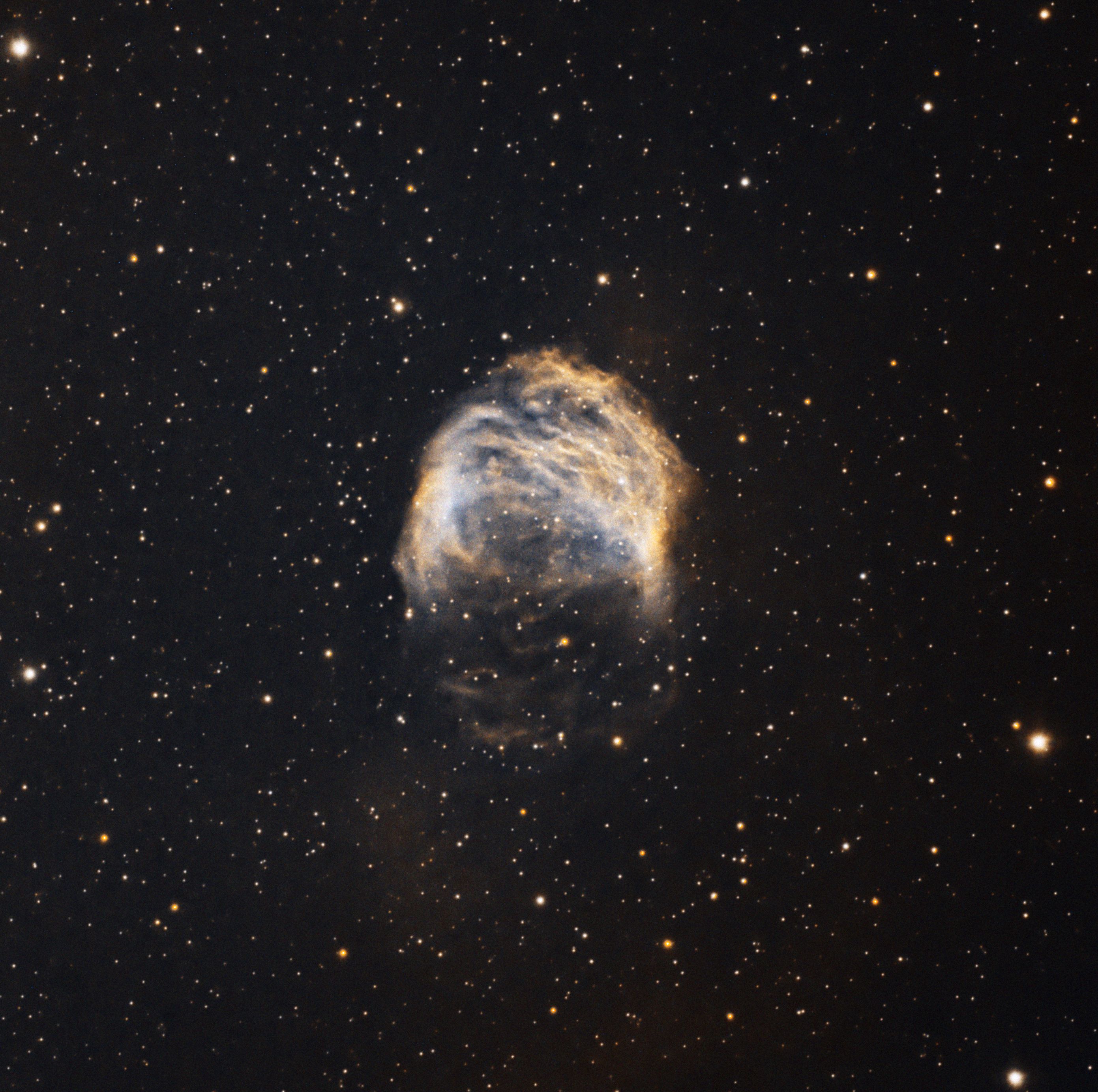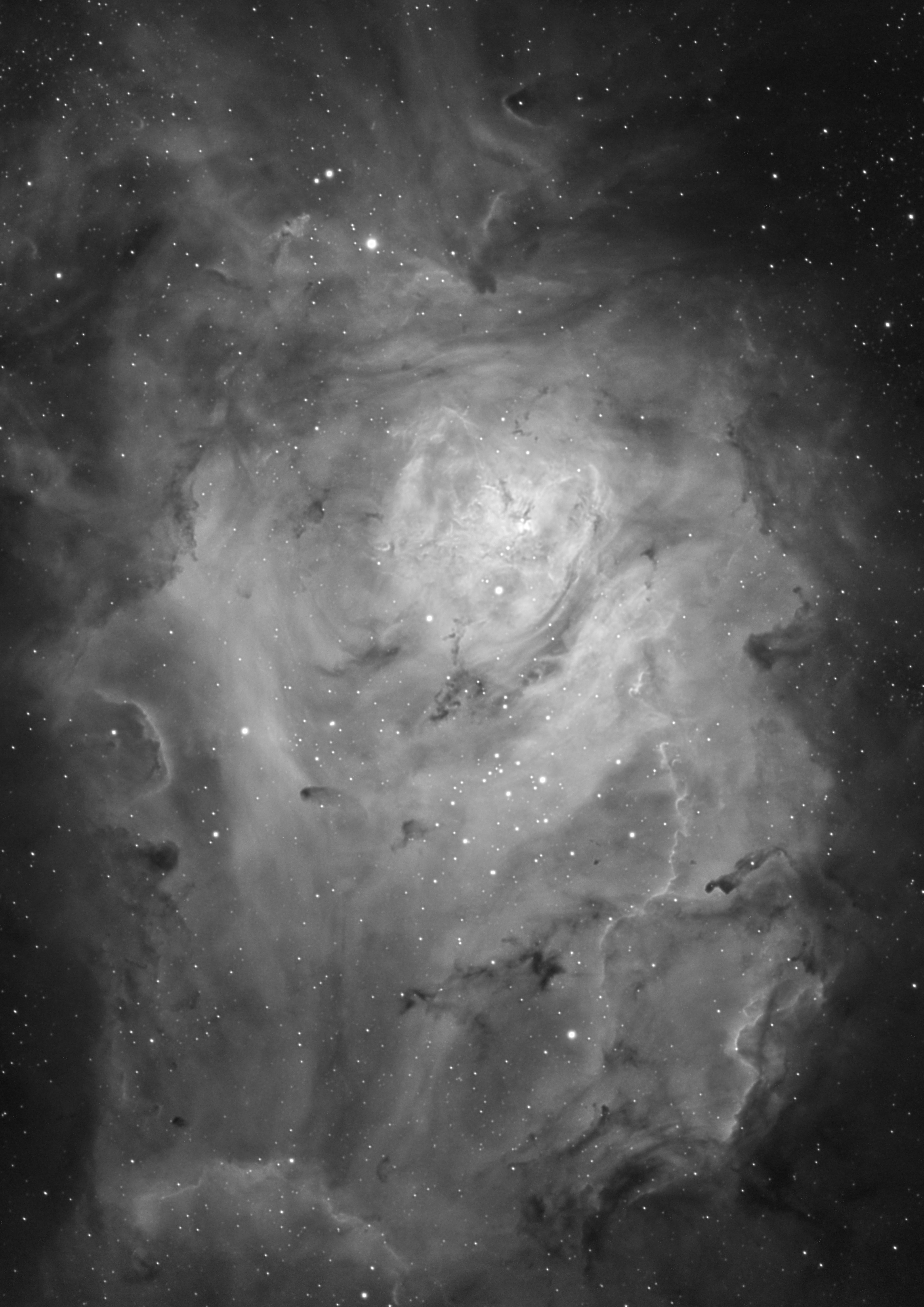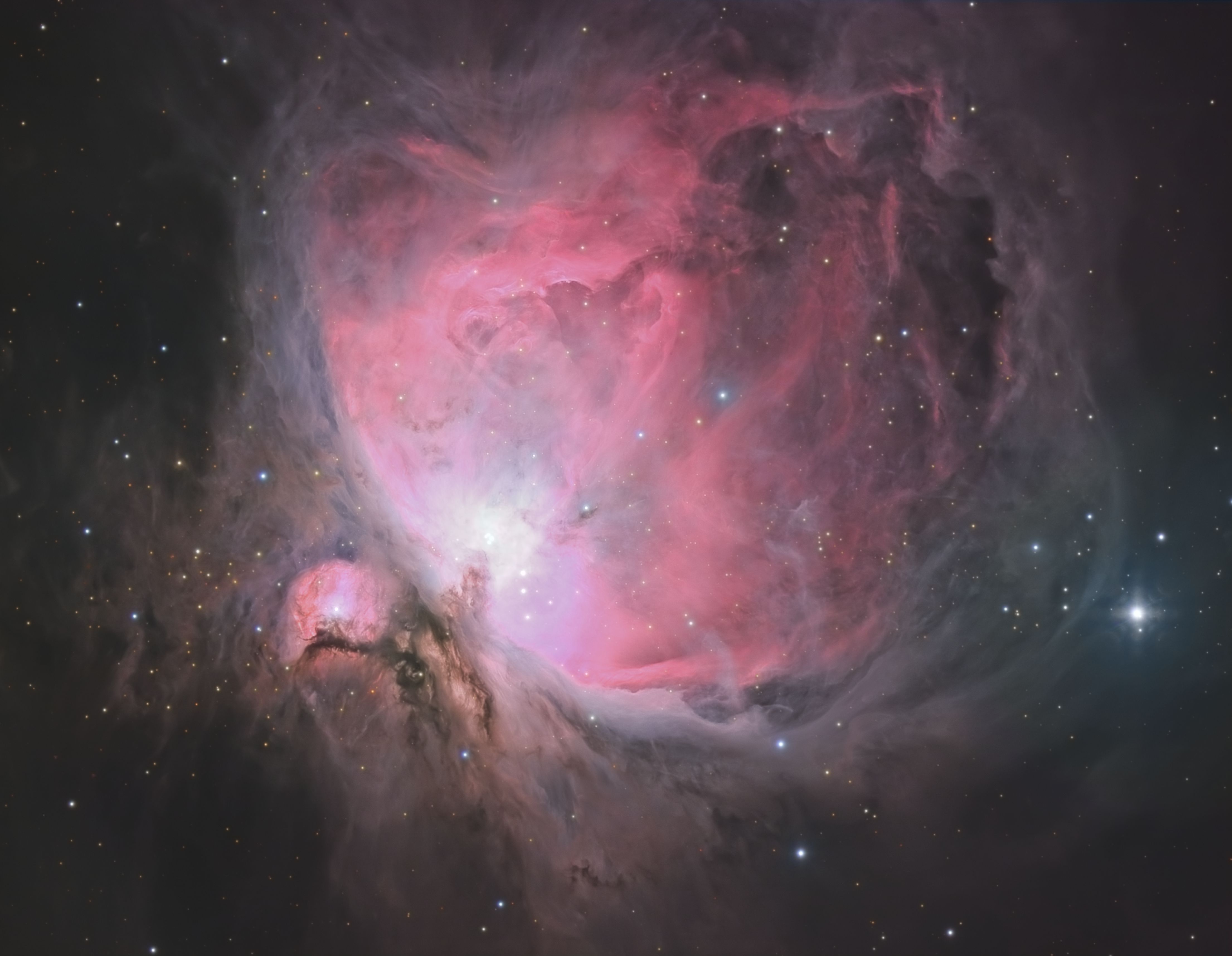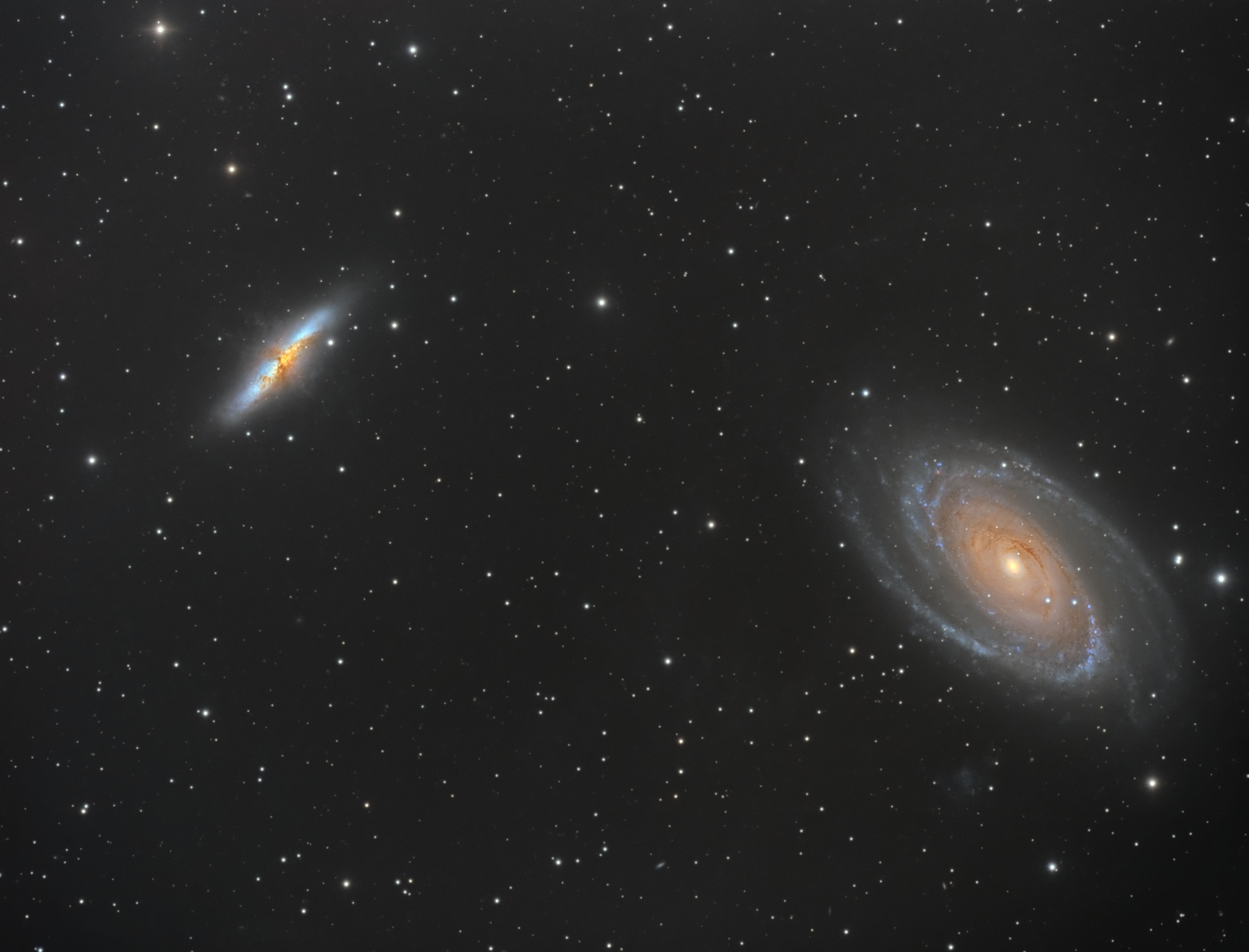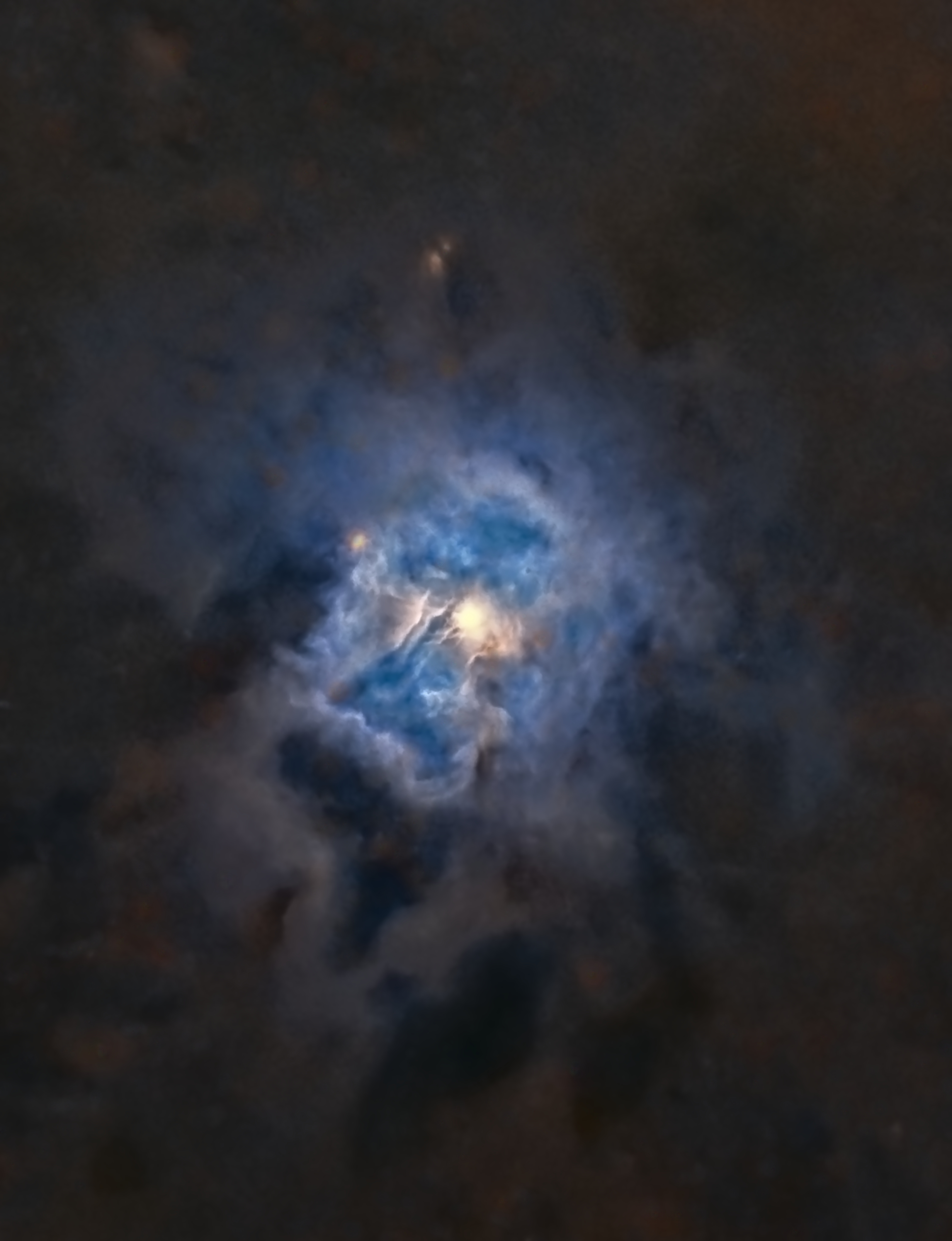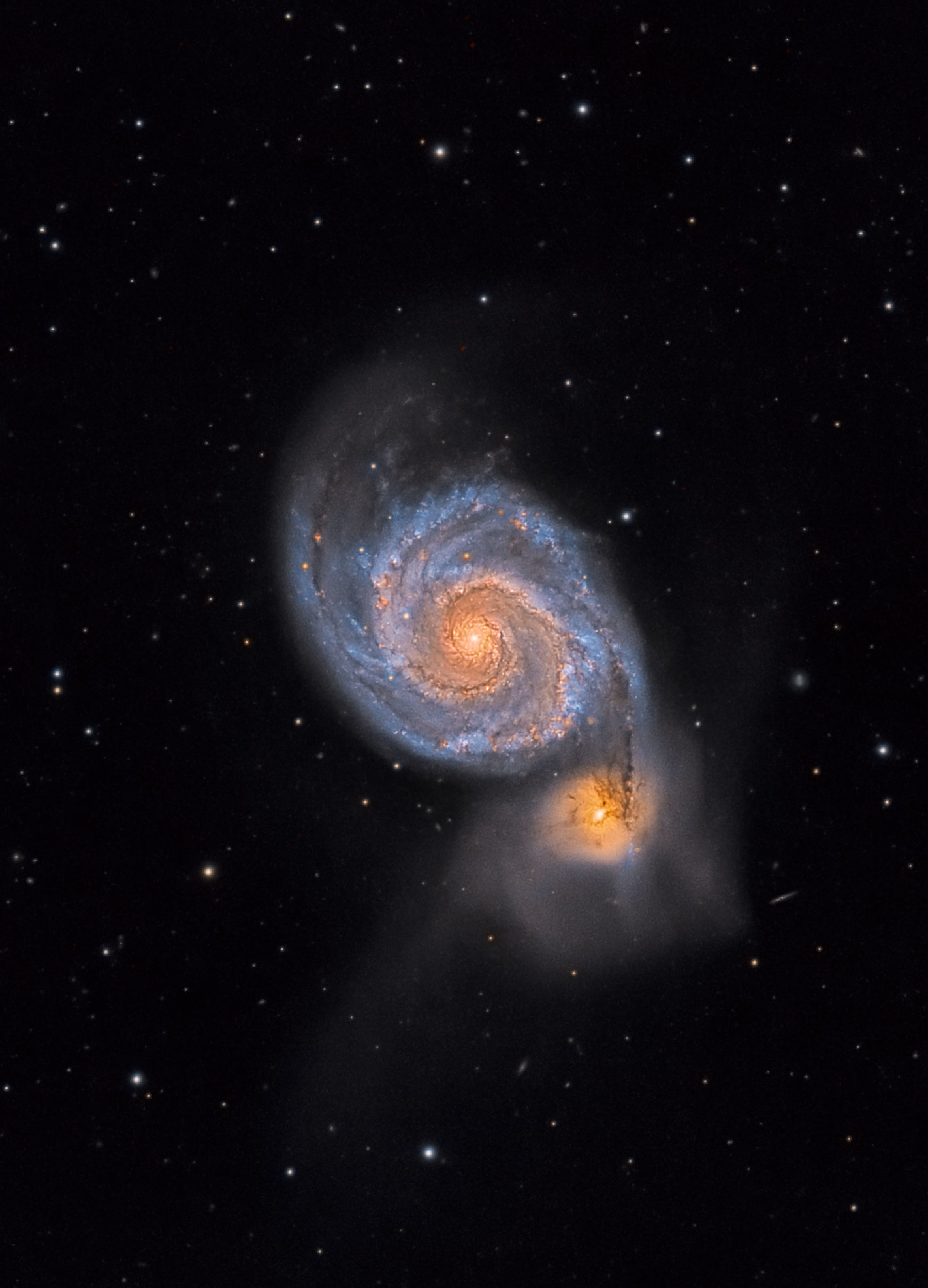
"Whirlpool Galaxy"
The Whirlpool Galaxy, also known as Messier 51a, M51a, and NGC 5194, is an interacting grand-design spiral galaxy with a Seyfert 2 active galactic nucleus.[7][6][8] It lies in the constellation Canes Venatici,and was the first galaxy to be classified as a spiral galaxy.[9] Its distance is estimated to be 23 millionlight-years away from Earth.The galaxy and its companion, NGC 5195,[10] are easily observed by amateur astronomers, and the two galaxies may be seen with binoculars.[11] The Whirlpool Galaxy has been extensively observed by professional astronomers, who study it to understand galaxy structure (particularly structure associated with the spiral arms) and galaxy interactions.
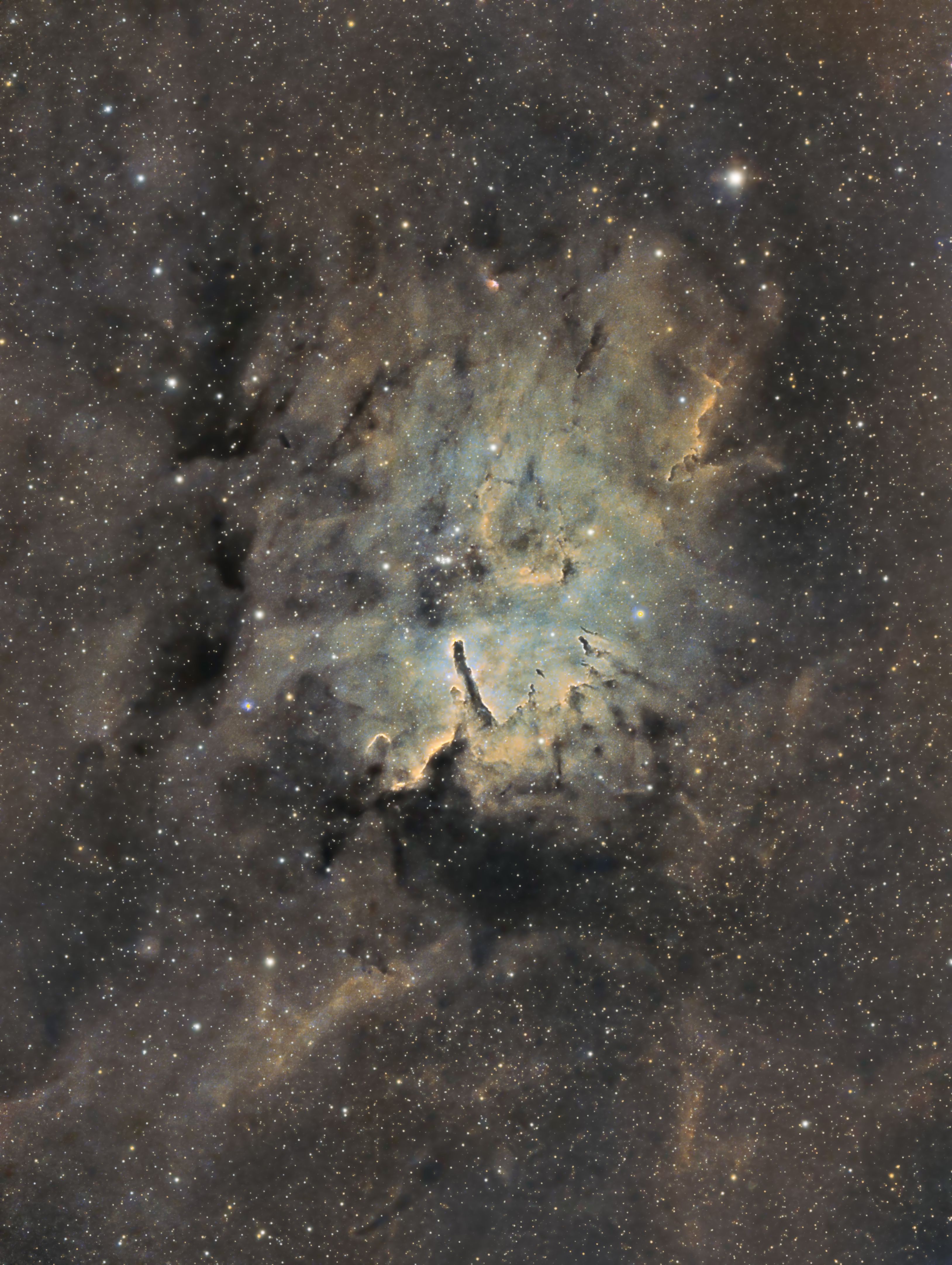
NGC 6820 is a small reflection nebula near the open cluster NGC 6823 in Vulpecula. The reflection nebula and cluster are embedded in a large faint emission nebula called Sh 2-86. The whole area of nebulosity is often referred to as NGC 6820.[3]
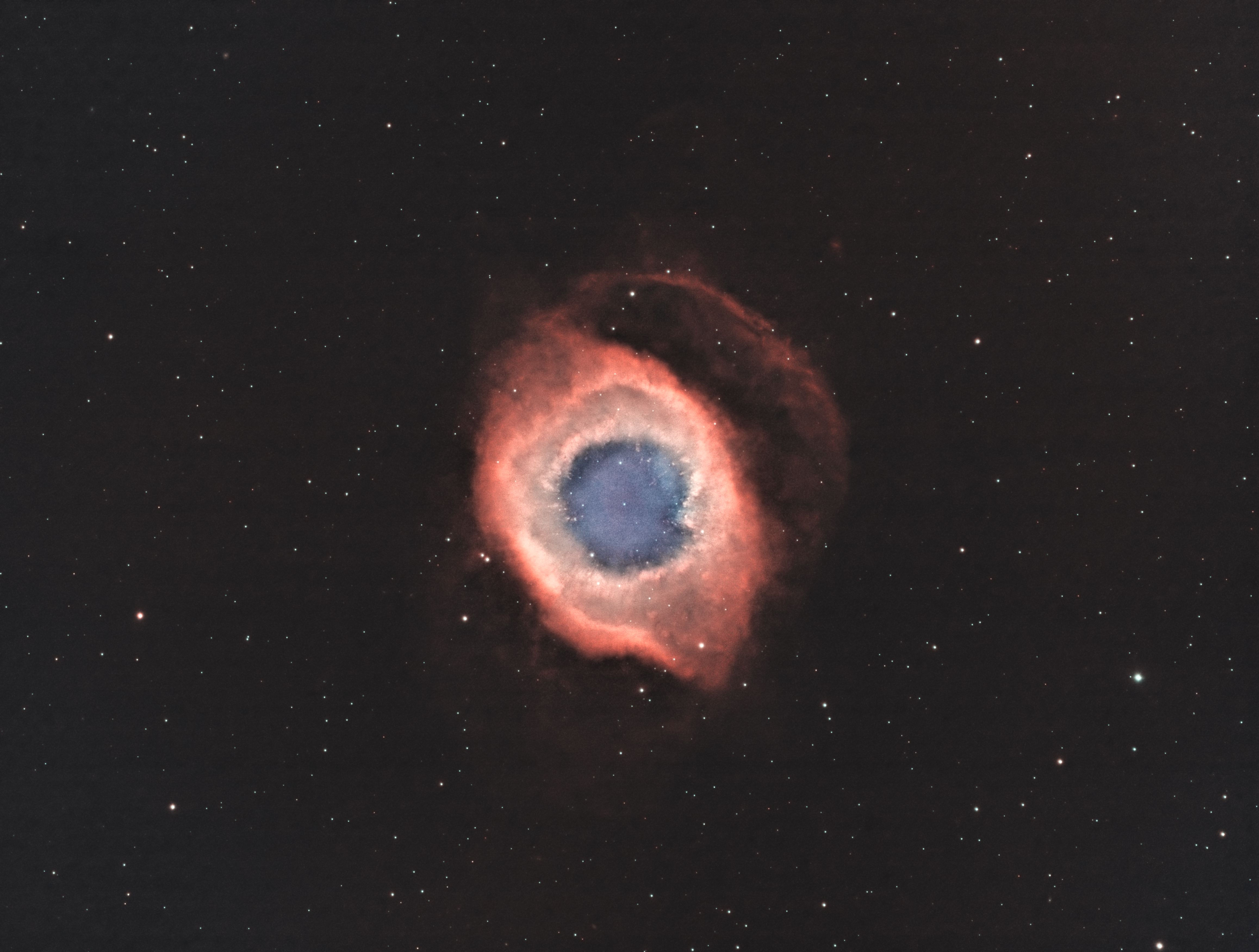
The Helix Nebula, also known as NGC 7293, is a planetary nebula (PN) located in the constellation Aquarius. Discovered by Karl Ludwig Harding, probably before 1824, this object is one of the closest to the Earth of all the bright planetary nebulae.[5] The distance, measured by the Gaia mission, is 655±13 light-years[6]. It is similar in appearance to the Cat's Eye Nebula and the Ring Nebula, whose size, age, and physical characteristics are similar to the Dumbbell Nebula, varying only in its relative proximity and the appearance from the equatorial viewing angle.[7] The Helix Nebula has sometimes been referred to as the "Eye of God" in pop culture,[8] as well as the "Eye of Sauron".[9][10]
Copyright 2019 - All Rights Reserved, Jason Burns
